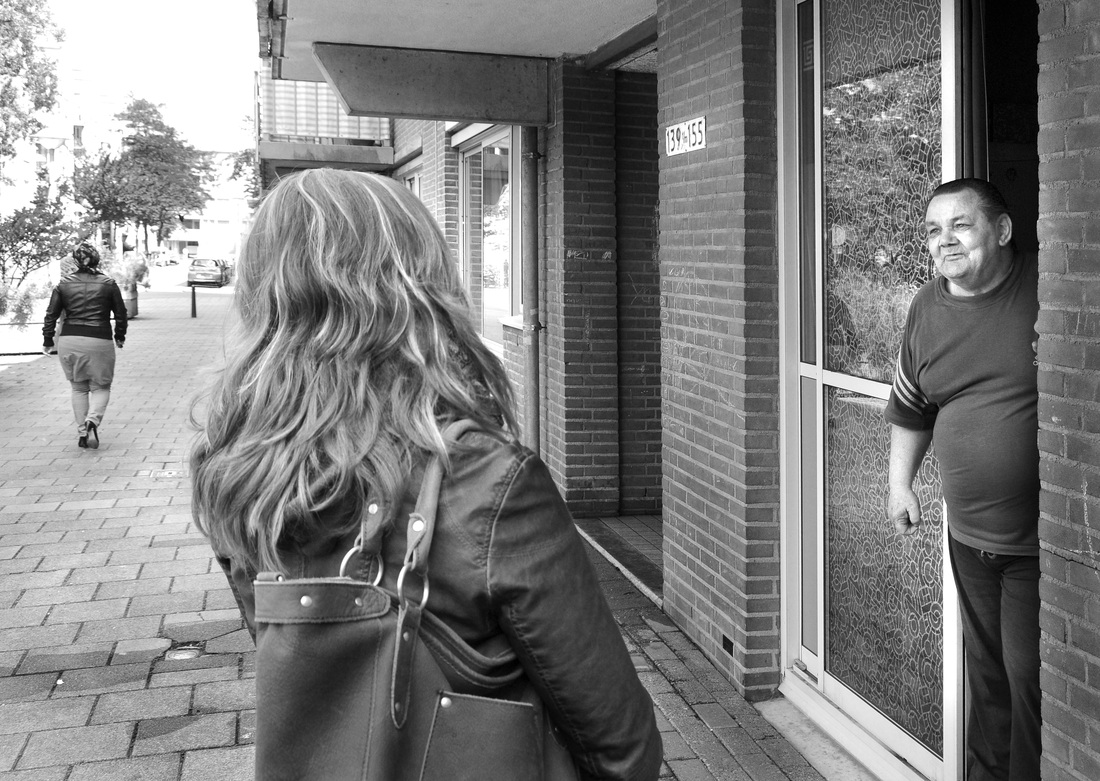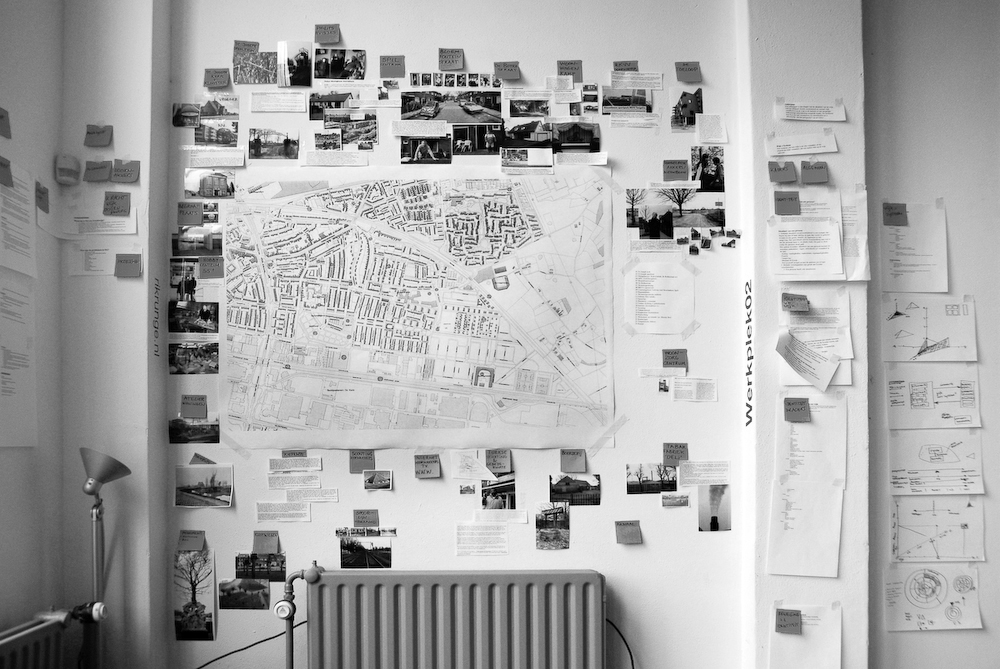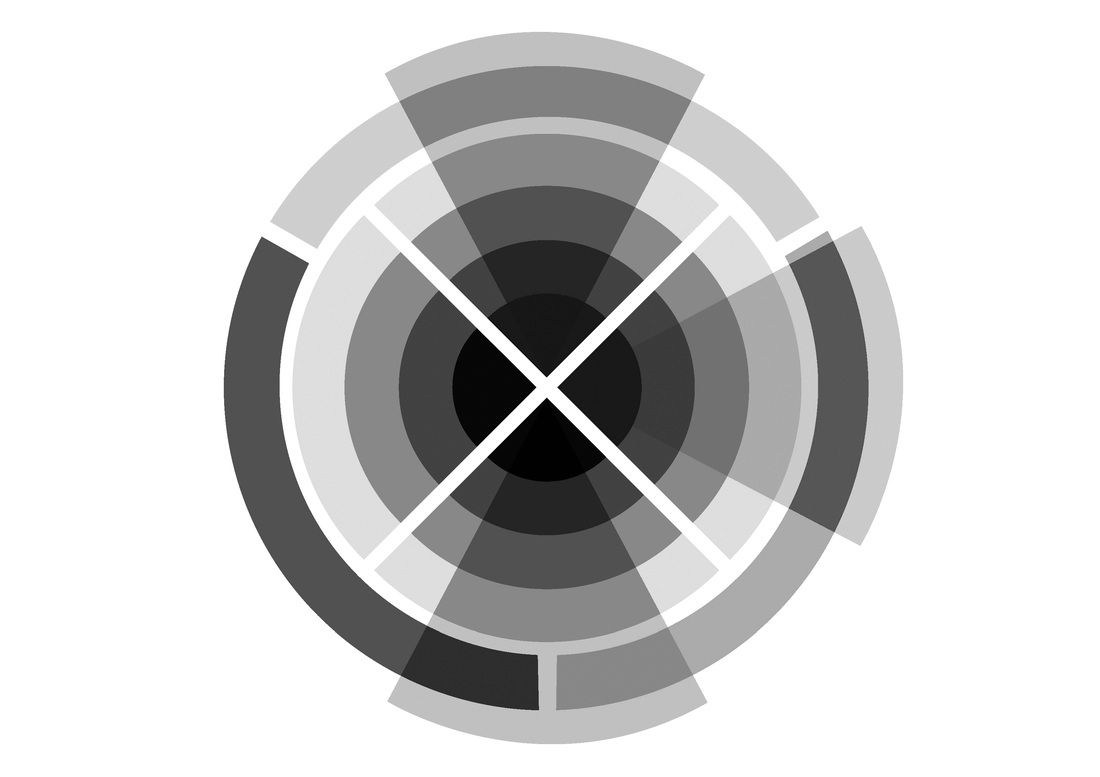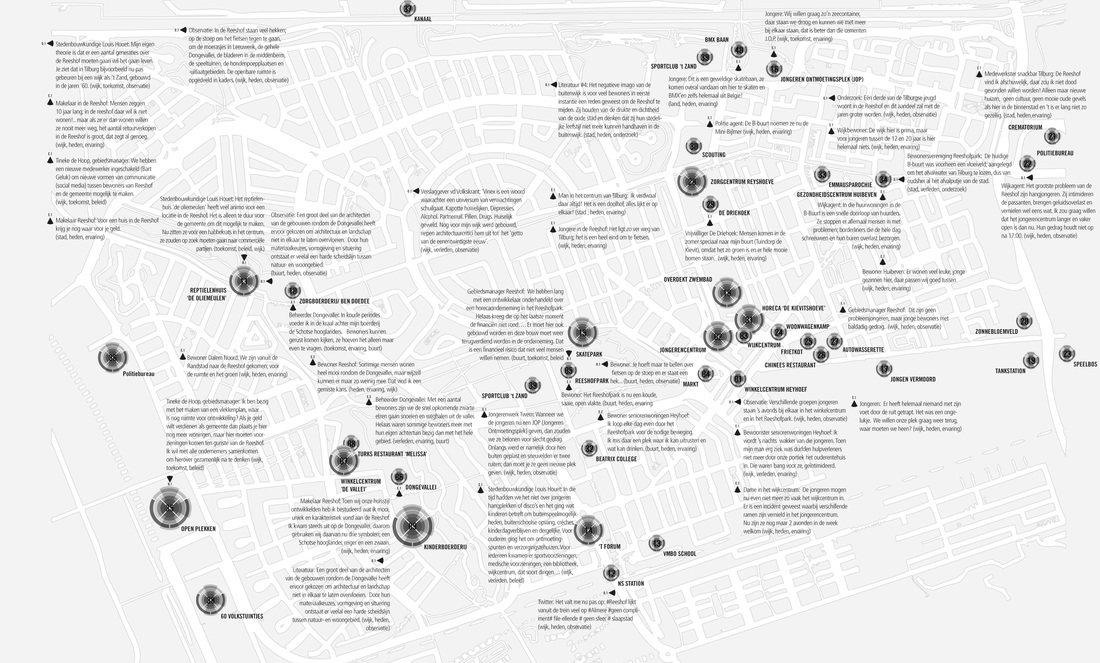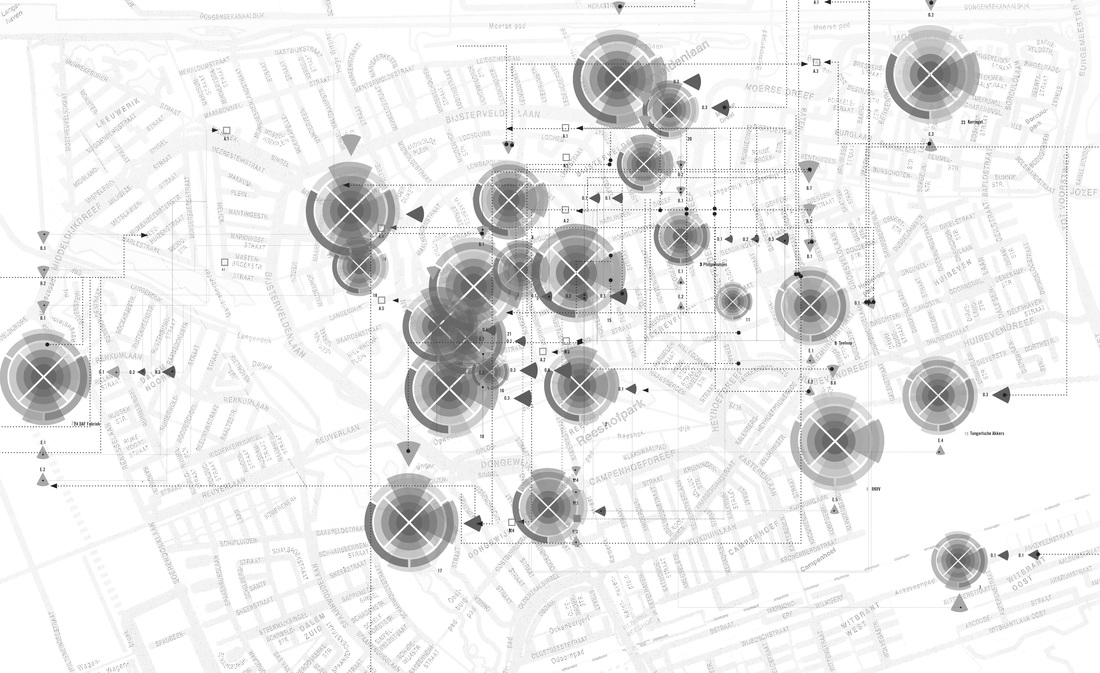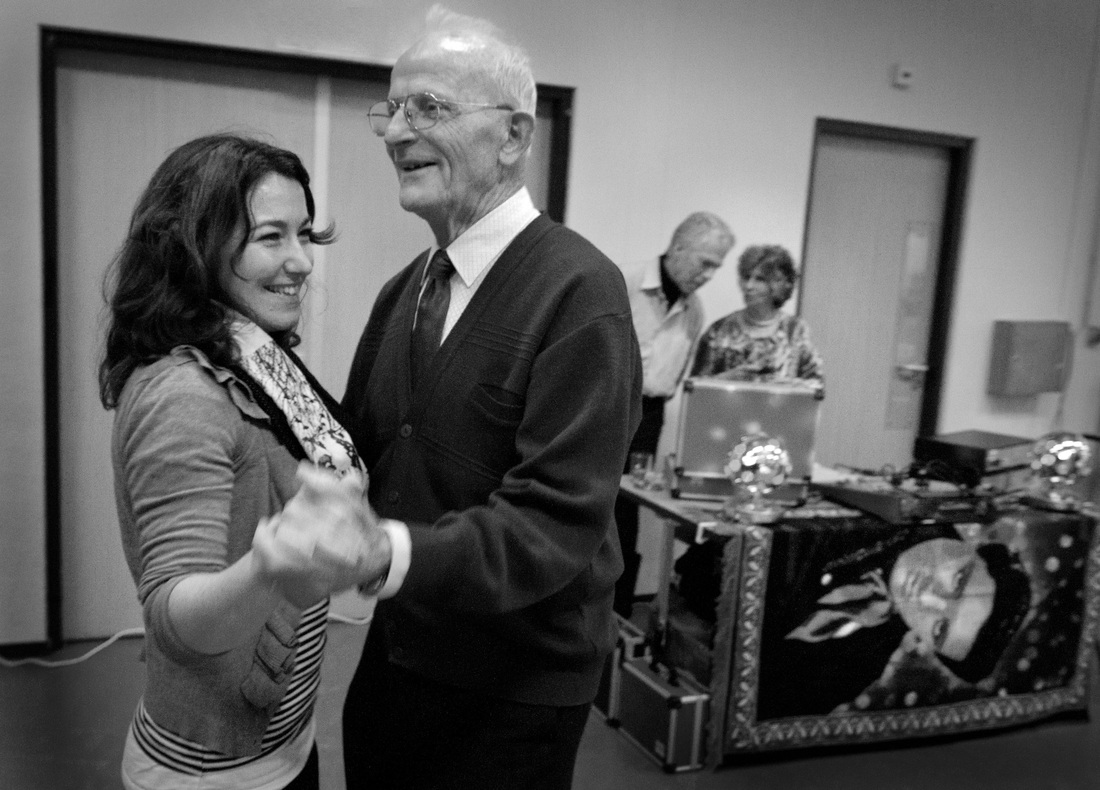Bureau Wijkwiskunde ('Cummunity Calculus') sprouted from the collaboration between two anthropologists and a graphic designer. Together we developed an innovative method to ‘map’ socio-spatial problems in urban areas, combining anthropological and visual methods to collect, analyze and present data. Through these maps we identify potential entry points for improving the social wellbeing, image, identity or physical appearance of particular localities, be it an entire neighborhood, a square, park or street.
We apply classical anthropological research approaches such as field observations and qualitative interviewing to acquire bottom-up insights into the perspectives of relevant stakeholders such as residents, social welfare institutes, commercial entrepreneurs and policy makers. By bringing into focus these multilayered perspectives on shared topics of concern, we often act as a bridge between these various stakeholders.
We provide our clients, which include municipalities, social welfare institutes and housing corporations, with policy recommendations, but prefer not to stop there. In also develop and implement creative solutions to address identified issues of concern. Our products therefore vary from interactive maps to shakebikes and a collective 'DNA-wall' with home adornments. Check out our website www.wijkwiskunde.nl for more examples!
We apply classical anthropological research approaches such as field observations and qualitative interviewing to acquire bottom-up insights into the perspectives of relevant stakeholders such as residents, social welfare institutes, commercial entrepreneurs and policy makers. By bringing into focus these multilayered perspectives on shared topics of concern, we often act as a bridge between these various stakeholders.
We provide our clients, which include municipalities, social welfare institutes and housing corporations, with policy recommendations, but prefer not to stop there. In also develop and implement creative solutions to address identified issues of concern. Our products therefore vary from interactive maps to shakebikes and a collective 'DNA-wall' with home adornments. Check out our website www.wijkwiskunde.nl for more examples!

